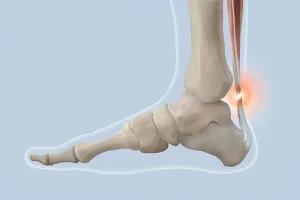Wrist fractures are among the most common bone injuries, affecting both older adults, often due to simple falls, and younger people following road accidents, scooter incidents, or other trauma. Depending on the type of impact, a fracture can have various forms, but with proper care, the bone typically heals fully, restoring normal hand function.
Orthopedic Treatment of Wrist Fractures
For most wrist fractures, orthopedic treatment is effective and sufficient. If the fracture is displaced (meaning the bone is misaligned), the doctor will perform a reduction, realigning the bone fragments under anesthesia, and then immobilize the wrist with a cast. If the fracture is not displaced, a simple plaster splint is applied to support bone healing.
The Orthopedic Treatment Process
- At 7 Days: An X-ray is taken to check that the bone remains properly aligned. If the position is stable, immobilization continues.
- At 14 Days: Another check-up is done, and if needed, the cast may be replaced with one that extends from the elbow to the fingers to ensure stability.
- At 6 Weeks: The cast is removed. The doctor will use an X-ray to confirm complete bone healing. If healing is satisfactory, the recovery and rehabilitation process begins.
Surgical Treatment of Complex Fractures
For more complex cases, especially when the fracture extends into the wrist joint, orthopedic treatment alone may not be enough, and surgery becomes necessary. These fractures can impact hand mobility, and full recovery may take more time and care.
Types of Surgical Procedures
- Open Reduction and Internal Fixation: The surgeon makes an incision to access the fracture, aligns the bone fragments, and secures them with a metal plate and screws to hold the bone in position.
- Closed Reduction with Percutaneous Pinning: Using X-ray guidance, the surgeon realigns the bone fragments by manipulating the wrist externally, then stabilizes the bone with thin metal pins, which are removed later.
Advantages and Disadvantages of Surgical Treatment
Advantages
- Improved control over the alignment and healing outcome.
- Shorter or no immobilization time in some cases.
- Effective treatment option for complex fractures.
Disadvantages
- Risk of infection and bleeding during or after surgery.
- Potential need to remove metal implants later, which can cause temporary discomfort.
Get The Treatment You Deserve
Wrist fractures can be treated successfully with either orthopedic methods or surgery, depending on how severe the injury is. Early diagnosis and appropriate treatment help ensure full healing and restore hand function effectively. Contact us today to learn how we can assist you.











